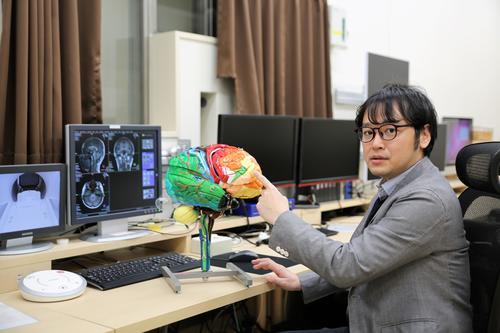- TOP
- NEWS & TOPICS
- See one thing and recall related things:…
2018.12.10About KUT / Academics / Research / Students Life
See one thing and recall related things: a pioneering discovery about the mechanism of memory
A collaborative research group (Kochi University of Technology, Juntendo University, The University of Tokyo) including Professor Masaki Takeda (Research Center for Brain Communications in the KUT Research Institute), made the pioneering discovery that, "When a person sees things and recalls related things, the neural circuit in the temporal lobe of the cerebrum operates flexibly on the spatial scale of the cortical layers."
This research outcome was published in the open access international scientific journal Nature Communications on November 6, 2018. This discovery is expected to enable researchers to improve the accuracy of the diagnosis, prevention and treatment of higher brain dysfunction, from the unit of brain area to the unit of the cortical layer in the area.
Prof. Takeda developed his interest in the brain when he was a junior high school student, when he asked himself the simple questions, "Why does each of us have different thoughts and ways of acting? Why do those behaviors change, depending on our emotions at the time?" From that time onward, he wanted to elucidate the mechanism of memory that makes us human, particularly the mechanism of knowledge-based memory, so he proceeded on the path to that kind of research.
Focusing on the relationship between area 36 and area TE in the temporal lobe, regions known to be important for knowledge-based memory, Prof. Takeda has been conducting research using monkeys, analyzing the action of the neural circuits for different cognitive functions such as seeing things (perception) and recalling related things (recall). He has discovered that the neural circuit of area 36 switches: when we see something (perception), the neural activity of area 36 is in cooperation with area TE in the superficial layer of the cortex, but when we recall a related thing (recall), area 36 activity is in cooperation with area TE in the deep layer of the cortex. This research result, the discovery of the precise behavior of the neural pathways of the brain at the cortical layer level, is a world-class achievement.
Prof. Takeda related his vision for the future: "Research on brain mechanisms has greatly advanced due to the accumulation of knowledge and the improvement of experimental equipment. I have been conducting research and anticipating new discoveries every day, findings such as the results of this research. Kochi University of Technology has very good experimental facilities, including a world class MRI. With these facilities, I aim to analyze the brain activity related to cognitive processes unique to humans, such as the language function. In addition, I hope to conduct research on neural mechanisms by activating or suppressing the functioning of certain areas of the brain."

RELATED POST
関連記事
